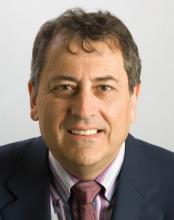Other autoantibodies commonly present in patients with type 1 diabetes, or at high risk for the disease, include insulin autoantibodies, islet cell autoantibodies, and antibodies to the zinc transporter. Combining the GAD vaccine with other major diabetes-specific autoantigens recognized by the immune system could provide synergistic benefits.
The likely necessity for a combined approach addressing multiple pathways was underscored in a separate presentation by Dr. Jay S. Skyler, chairman of the type 1 Diabetes TrialNet, a National Institutes of Health–funded international network of centers conducting clinical trials of diabetes therapies.
The GAD vaccine appears to have the same limitation as the other immunomodulatory therapies evaluated to date in clinical trials, including the B cell–depleting anti-CD20 agent rituximab, and the anti-CD3 biologics teplizumab and otelixizumab: namely, they preserve beta cell function for a while, but the effect is transient. Eventually fasting C-peptide levels start to fall off in parallel to the placebo group. That’s why combination therapy will probably be required in order to cure or prevent Type 1 diabetes, according to Dr. Skyler, a professor of medicine, pediatrics and psychology at the University of Miami.
Ideally, a combination therapy should be multipronged, with three goals: Stop immune destruction, preserve beta-cell mass, and replace or regenerate beta-cells. Such a regimen might start off with a potent anti-inflammatory therapy – perhaps an anti-interleukin-1beta agent or tumor necrosis factor inhibitor – to quell the metabolic stress surrounding the pancreatic islets. This might well need to be given on a continuing basis.
Next would come an immunomodulatory approach; for example, T-cell modulation with an anti-CD3 biologic or B cell depletion with rituximab. This could be followed up with an autoantigen-specific therapy such as the GAD vaccine or oral insulin. “Maybe it needs to be both,” Dr. Skyler continued.
The logical subsequent step would be to try to stimulate immunologic expansion of regulatory T cells, either with granulocyte colony–stimulating factor or by direct infusion of regulatory T cells themselves. This could be combined with beta-cell expansion via exenatide (Byetta) or the investigational HIP2B peptide.
“We could conceivably be doing some of these things even today,” Dr. Skyler said.
Dr. Ludvigsson reported receiving research grant support from Diamyd.
Dr. Skyler has served as a consultant to and/or received research grants from numerous pharmaceutical companies.


